
IRIS TUTORIAL
Filtering
Unsharp masking
Load an image (16 or 48 bits):

Run the Unsharp mask command of Processing menu:
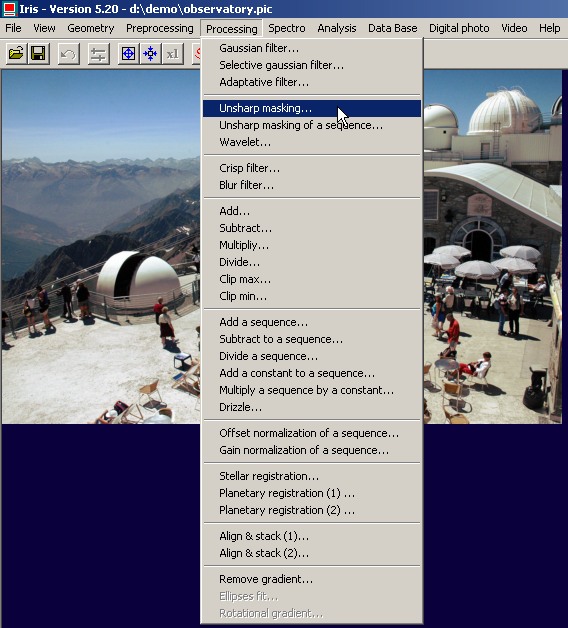
Try:
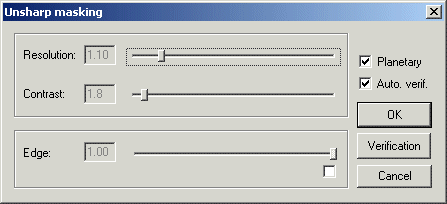
The result...



Wavelet
The Wavelet command of Processing menu is a more sophisticated filter: It is possible to act in a precise way on specific spacial frequencies of the image.
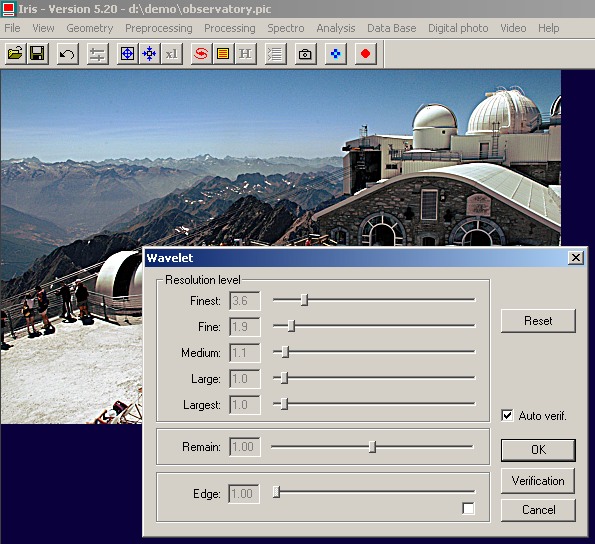
High Pass & Low pass filters
Select the Crisp function of the Processing menu. It is a high pass filter. Drag the slider, then click OK:
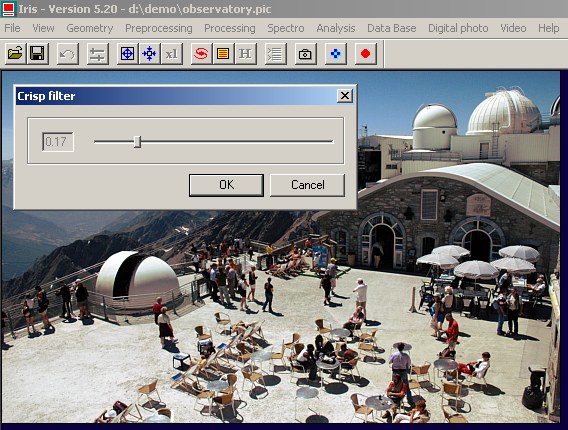
The equivaleny console command is:
>CRISP 0.17
And now, the Blur function of the Processing menu (a low pass filter)...
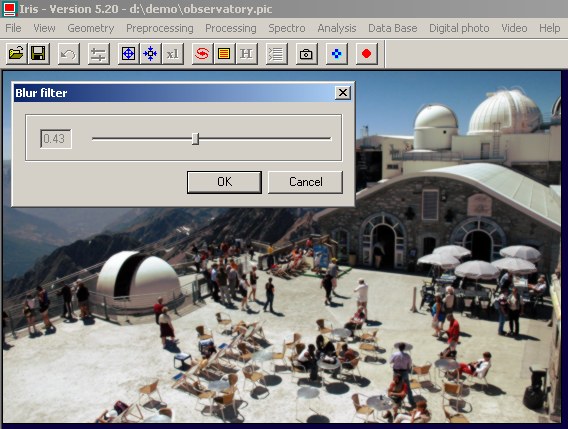
The equivalent console commands are CRISP (or SHARP) and BLUR. For example:
>BLUR 0.43
Gaussian blur
The convolution of an image by a gaussian function is important in astronomical image processing because the operation mimic the blur caused by the seeing or the transfert function of an optical system. This type of low pass filter produce natural and realistic result. Click on the Gaussian filter item of the Processing menu and enter a value (a real number). A null value does not produce any effect on the image. A very slight effect on the image is visible if the value of the filter is 0.7 for example, and so on. Here, for example, the image of M51 with a value of 10. The blur is very severe!
|
|
|
Left, before filtering. Right, after filtering.
The equivalent console command is
>GAUSS 10
Note:
Successive gaussian blur can be applied.
Selective Gaussian filter
The Gaussian selective filter is a powerful procedure of Iris to reduce the noise of an image while preserving a maximum of details. Consider for example the following image, affected by a severe thermal noise:

Run command Selective Gaussian filter of Processing menu and choose this value for the parameter (do not hesitate to test differents values - remenber that it is possible of cancel the last operation carried out since the tools bar):
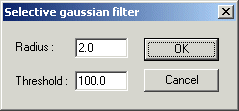
Here the result

Technically, the selective gaussian blur filter method smooth selectively areas of the image affected by noise. The filter is applied to areas with contrast below a certain threshold. The threshold is one of the parameter of the command. Typical values are between 5 and 50. A higher setting will produce more smoothing. The second parameter of the command is the blur radius, the number of pixels considered for blurring.
Another example
|
|
|
|
Left, part of a wide field two minutes exposure with the Canon EOS 10D and a 17-mm focal length lens. Right, the same image after the noise reduction (note, details are preserved). Here, the filter parameters are radius=8, threshold=7. |